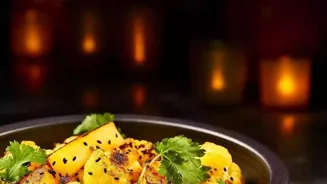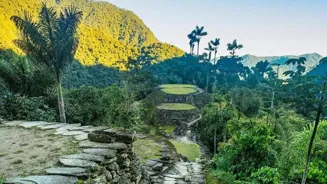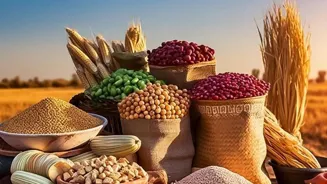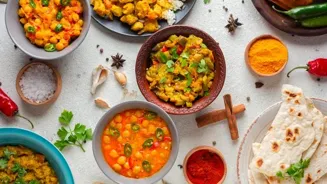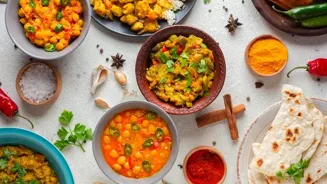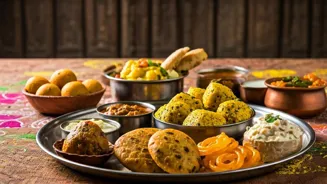Embark on a culinary journey through India's lesser-known delights. 5 dishes that promise a taste adventure!
India, a land of vibrant culture and diverse landscapes, boasts a culinary heritage as rich and varied
as its history. While dishes like butter chicken and biryani have gained international fame, a treasure trove of lesser-known regional delicacies remains waiting to be discovered.
Prepare your taste buds for an exciting journey as we unveil five vegetarian Indian dishes that deserve a place on your culinary bucket list.
These aren't your everyday restaurant staples; they're authentic flavors passed down through generations, promising a truly unique and unforgettable experience.
Dhuska (Jharkhand): A Crispy Delight
Imagine golden-brown, crispy fritters made from a fermented batter of rice and lentils. That’s Dhuska, a popular breakfast and snack in Jharkhand. The batter is typically seasoned with ginger, garlic, and green chilies, giving it a subtle yet flavorful kick.
These small, round fritters are deep-fried to perfection, resulting in a delightful combination of a crunchy exterior and a soft, slightly spongy interior. Dhuska is often served with ghugni (a spiced chickpea curry), aloo sabzi (potato curry), or a simple chutney.
It offers a comforting and satisfying start to the day.
This dish provides the perfect symphony of textures and spices. It is a simple, rustic dish that is packed with flavor and nutrition.
It is a testament to the resourcefulness of Indian cuisine, where simple ingredients are transformed into culinary masterpieces. The fermentation process also adds a unique tanginess to the Dhuska, enhancing its overall taste profile.
Try it with some spicy potato subzi to relish its overall flavor.
Thepla (Gujarat): A Travel Companion
Hailing from Gujarat, Thepla is a thin, flatbread made with wheat flour, gram flour (besan), and a medley of spices and herbs.
What sets Thepla apart is the addition of ingredients like fenugreek leaves (methi) or grated bottle gourd (doodhi), which not only enhance its flavor but also add nutritional value. Thepla is traditionally cooked on a griddle with a touch of oil until golden brown spots appear on both sides.
It's soft, pliable, and boasts a slightly sweet and savory flavor profile.
Thepla is a staple in Gujarati households and is especially popular for travel. Its long shelf life makes it an ideal snack for long journeys. It is often enjoyed with yogurt, chutney, or pickle.
The addition of spices like turmeric, chili powder, and cumin gives it a warm and comforting flavor. It is a versatile dish that can be enjoyed for breakfast, lunch, or dinner. Thepla can also be made in a variety of flavors by adding different vegetables or spices.
One variant of Thepla can be Beetroot Thepla, where beetroot is added to normal Thepla to impart a sweet taste to it.
Dal Pitha (Bihar): Steamed Goodness
Dal Pitha is a traditional Bihari dish that features steamed dumplings made from rice flour and filled with a spiced lentil paste. The outer covering is soft and slightly chewy, while the filling is savory and flavorful.
To prepare Dal Pitha, the rice flour is kneaded into a dough, and small portions are flattened into circles. A mixture of chana dal (split chickpeas), spices, and herbs is then placed in the center, and the dough is folded to form a crescent shape.
These dumplings are then steamed until cooked through.
Dal Pitha is a healthy and nutritious dish that is often enjoyed during festivals and special occasions. It is typically served with chutney or a simple vegetable curry. The steaming process makes it a light and easily digestible meal.
The spices used in the lentil filling vary from household to household, but common ingredients include ginger, garlic, green chilies, and coriander. It provides a balanced combination of carbohydrates and protein.
This quintessential Bihari dish is not only delicious but also a great way to experience the authentic flavors of Bihar.
Undhiyu (Gujarat): An Earthen Pot Delight
Undhiyu is a Gujarati mixed vegetable casserole that is traditionally cooked upside down in earthen pots buried underground and slow-cooked over a fire. The name "Undhiyu" comes from the Gujarati word "undhu," which means upside down.
This dish is a winter specialty, featuring a variety of seasonal vegetables like eggplant, potatoes, sweet potatoes, green beans, peas, and fenugreek leaves. A unique blend of spices and herbs, including cilantro, ginger, garlic, and green chilies, gives Undhiyu its distinctive flavor profile.
The vegetables are marinated in the spice mixture and then layered in the earthen pot. The pot is then sealed and buried underground with a fire lit on top. This slow-cooking process allows the flavors to meld together, resulting in a rich and aromatic dish.
While the traditional method is still practiced in some rural areas, Undhiyu can also be made in a pressure cooker or pot on the stovetop. It is typically served with puri (deep-fried flatbread) and buttermilk. Despite the long cooking time, the unforgettable flavor is well worth the effort.
Kadubu (Karnataka): Sweet and Savory
Kadubu is a popular dish in Karnataka with both sweet and savory variations. The outer covering is made from rice flour or rava (semolina), and the filling can be anything from a sweet coconut and jaggery mixture to a spicy vegetable or lentil blend.
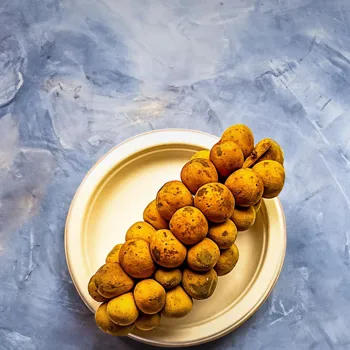
To make Kadubu, the dough is rolled out into small circles, and the filling is placed in the center. The dough is then folded into a half-moon shape and steamed or fried.
The sweet version of Kadubu is often prepared during festivals, while the savory version is a popular snack.
The steaming process gives the Kadubu a soft and slightly chewy texture, while the filling provides a burst of flavor. The spices used in the savory filling can vary depending on personal preference. Kadubu is a versatile dish that can be enjoyed as a breakfast, snack, or dessert.
It is a testament to the creativity and resourcefulness of South Indian cuisine.
These five dishes are just a glimpse into the vast and diverse world of Indian vegetarian cuisine.
Venture beyond the familiar and embark on a culinary adventure that will tantalize your taste buds and broaden your understanding of India's rich gastronomic heritage. Happy eating!
